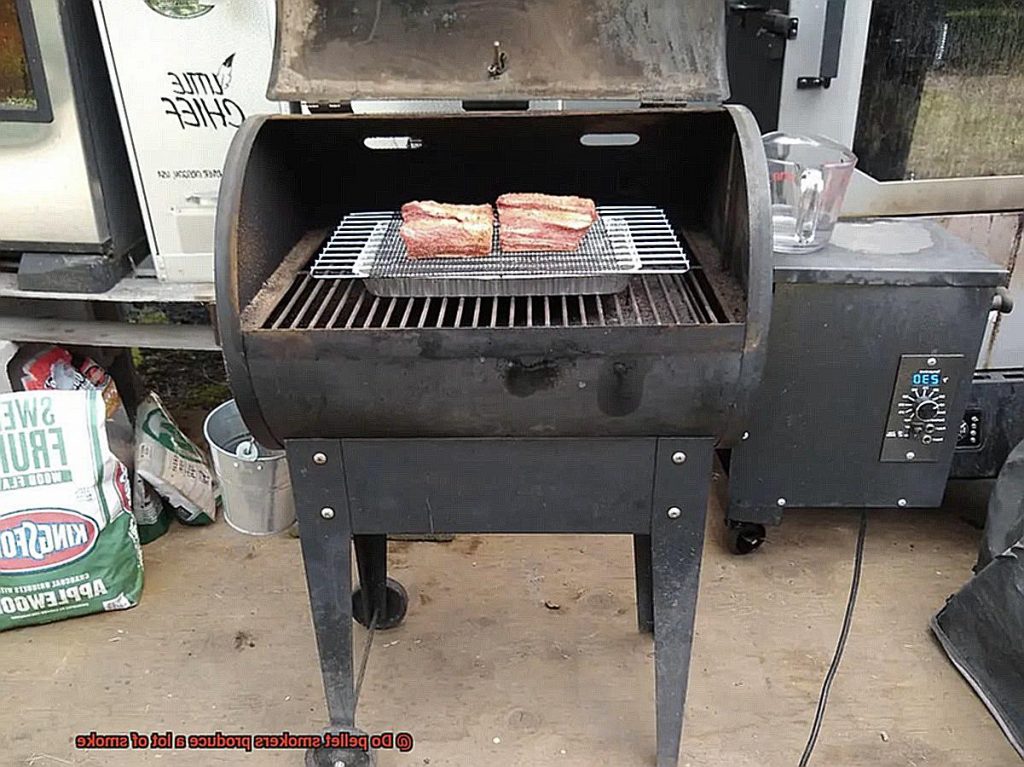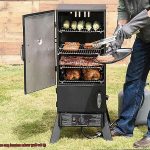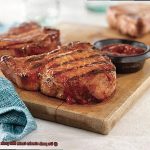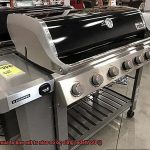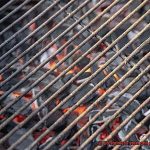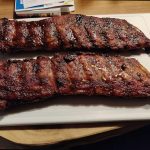Are you tired of the struggle to get just the right amount of smoke for your meat? Well, we’re here to help.
The debate over whether pellet smokers produce too much smoke or not enough has been raging in the world of BBQ for some time now. Some swear by pellet smokers as the ultimate smoking machine that imparts just the right amount of flavor to your food. Others argue that these smokers produce too much smoke, leading to an overpowering taste.
In this post, we’ll take a deep dive into the science behind pellet smokers and their smoke production. We’ll explore how these machines work and what factors can impact their smoke output. We’ll also compare the pros and cons of using pellet smokers versus traditional charcoal or wood smokers.
So whether you’re a seasoned pitmaster or just starting out, join us on this journey to uncover the truth about pellet smokers and their smoke production. Get ready to learn some fascinating facts and find out if a pellet smoker is the right choice for your next BBQ adventure.
Contents
What are Pellet Smokers?
Pellet smokers, also known as pellet grills or wood pellet grills, have become an increasingly popular outdoor cooking appliance in recent years. They offer a convenient and easy-to-use option for those who want to enjoy the delicious flavor of smoked food without the hassle of traditional charcoal or wood smokers.
So, what exactly are pellet smokers? Simply put, they use hardwood pellets as fuel to grill, smoke, roast, or bake food. The process is managed by an electronic control panel that regulates the temperature and feeds wood pellets into a firepot. The pellets are then ignited by a hot rod, and a fan circulates the heat and smoke throughout the cooking chamber. This process allows for precise temperature control and even cooking.
One of the key advantages of pellet smokers is their consistency. The electronic control panel allows you to set the desired temperature and maintain it throughout the cooking process, resulting in evenly cooked food every time. Additionally, pellet smokers produce a consistent amount of smoke that adds flavor to your food without overpowering it. You can choose from a variety of wood pellets to adjust for different levels of smokiness.
Pellet smokers are also highly versatile and can be used for a range of cooking methods. They can produce high temperatures for searing steaks or low temperatures for smoking brisket. Some models even come with features such as wifi connectivity and meat probes that allow for remote monitoring and control of the cooking process.
How Does the Type of Wood Pellets Used Affect Smoke Production?
You might be wondering how different types of wood pellets affect smoke production. As an expert on this topic, I can tell you that the type of wood pellets used in pellet smokers can make a huge difference.
Let’s start with the types of wood pellets. Hardwood pellets such as oak, hickory, and mesquite are known for producing a lot of smoke. These are popular choices among pitmasters and barbecue enthusiasts who desire a strong smoky flavor in their meat. However, softwood pellets produce less smoke and are not recommended for use in pellet smokers.
But it’s not just about the type of wood – quality also matters. Low-quality pellets may contain fillers or additives that can impact burn rate and smoke production. Therefore, it’s important to choose high-quality pellets made from 100% pure wood that have been properly stored.
Moisture content is another crucial factor to consider. Wet or damp pellets will produce more steam than smoke, which can result in a bitter taste in your food. To avoid this, make sure to store your pellets in a dry place and ensure they are completely dry before use.
Finally, temperature plays a role too. Lower temperatures typically result in more smoke production, while higher temperatures may produce less smoke but a stronger flavor. It’s essential to experiment with different types of wood and temperatures to find what works best for your desired flavor profile.
How Does Temperature Affect Smoke Production?
If so, you probably know that temperature plays a vital role in smoke production when using a pellet smoker. But do you know how it works? As an expert on the topic, I’m here to explain how temperature affects smoke production when grilling with a pellet smoker.
First, let’s talk about temperature. The lower the temperature, the more smoke will be produced. This is because at lower temperatures, the pellets have more time to smolder and release smoke, resulting in a richer flavor. However, if you’re cooking at higher temperatures for a quick sear or to reduce cooking time, you may notice less smoke production. This is due to the fact that higher temperatures tend to burn pellets more efficiently and quickly, resulting in less smoke.
But temperature isn’t the only factor affecting smoke production. The type of wood pellets being used in the smoker has a significant impact on the flavor of your food. Different types of wood have different smoke profiles, meaning that some will produce more smoke than others. For example, hickory or mesquite pellets tend to produce a stronger smoke flavor than apple or cherry pellets. So be sure to choose your wood pellets wisely depending on your desired flavor profile.
Luckily, many pellet smokers come with settings that allow for adjustments in temperature and smoke production. By experimenting with these settings, you can find the perfect balance between temperature and smoke to achieve your desired flavor profile.
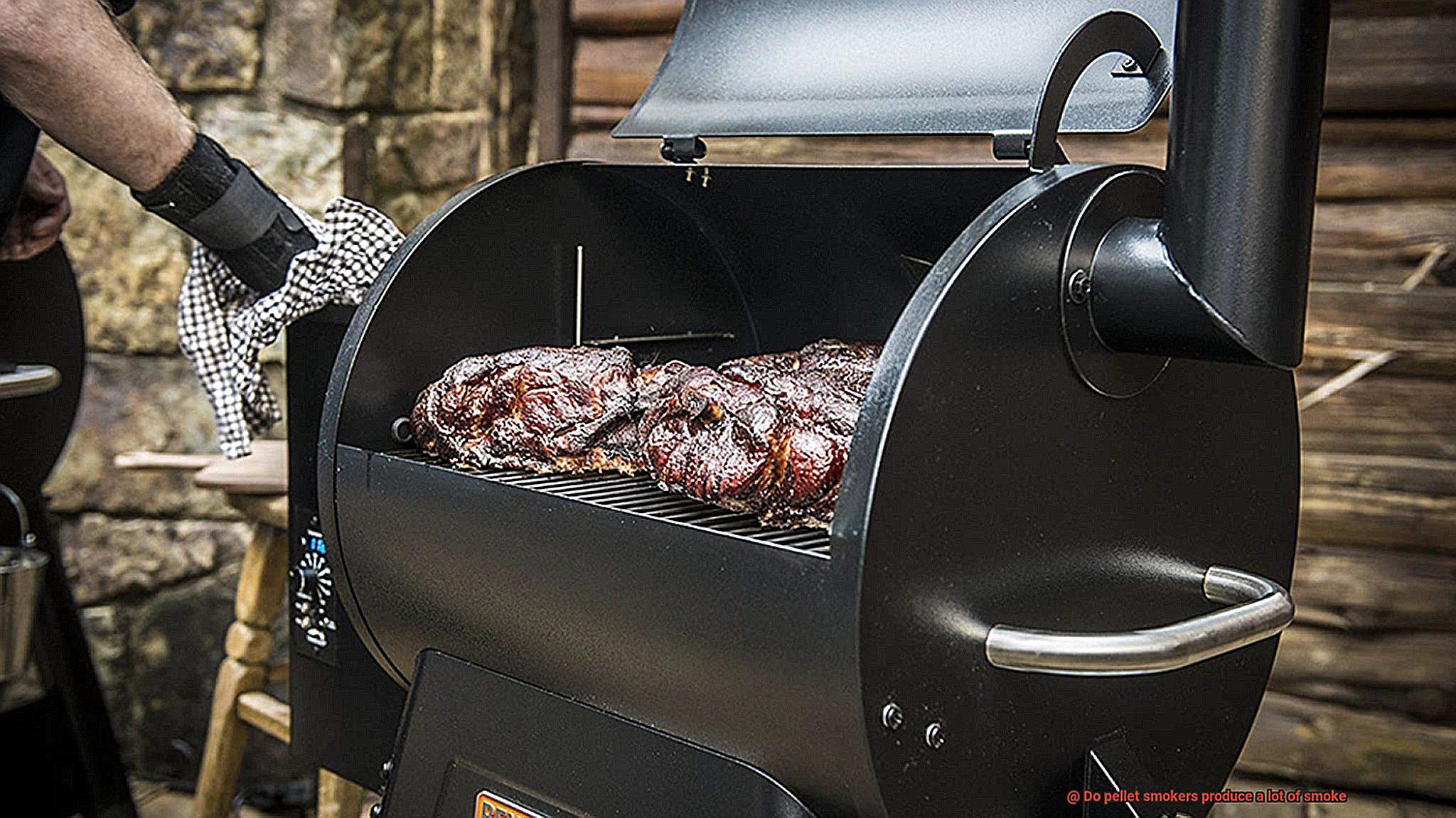
The Design of the Smoker and Smoke Production
Well, get ready to learn about the fascinating world of pellet smoker design and its impact on that mouth-watering flavor we all crave.
Let’s start with the basics. Pellet smokers use a hopper that feeds wood pellets into a heating element, creating smoke. This differs from traditional charcoal or wood smokers, which rely on combustion to produce smoke. The unique design of pellet smokers allows for precise temperature control and consistent smoke production, making them a popular choice in the BBQ world.
Now, onto the exciting part – how does the design affect smoke production? While temperature settings and wood pellet selection play a crucial role, the smoker’s design can also impact smoke production. Some pellet smoker models are specifically designed to produce more smoke than others.
For example, some models have a smoke mode that produces more smoke at lower temperatures. This is achieved by controlling the amount of oxygen allowed into the smoker to slow down the combustion rate of the pellets, resulting in more smoke production. Other models have adjustable vents that allow for more or less smoke production.
But wait, there’s more. The type of wood pellets used in a pellet smoker also affects smoke production. Hickory or mesquite pellets produce more smoke than apple or cherry pellets, so selecting the right wood pellets for your desired flavor profile is essential.
Tips to Reduce Smoke from Pellet Smokers
Pellet smokers are an excellent way to cook food with minimal effort, but they can produce a significant amount of smoke. If you’re not a fan of the smoky flavor or want to reduce smoke production for health or environmental reasons, here are some tips to help you out.
Choose the Right Pellets
The type of pellets you use can greatly affect the amount of smoke produced by your smoker. If you want to reduce smoke production, choose pellets made from fruitwoods like apple or cherry. These types of woods produce less smoke while still imparting a delicious flavor to your food. On the other hand, hardwood pellets tend to produce more smoke than softwood pellets. Also, avoid using pellets with additives or oils, which can create more smoke.
Keep Your Pellet Smoker Clean
A buildup of ash and grease can lead to excess smoke production. Cleaning out the firebox and grease tray regularly is essential in keeping your pellet smoker clean. Use a brush to remove any ash that may have accumulated on the grates or other surfaces. A clean smoker produces less smoke and is healthier for both you and the environment.
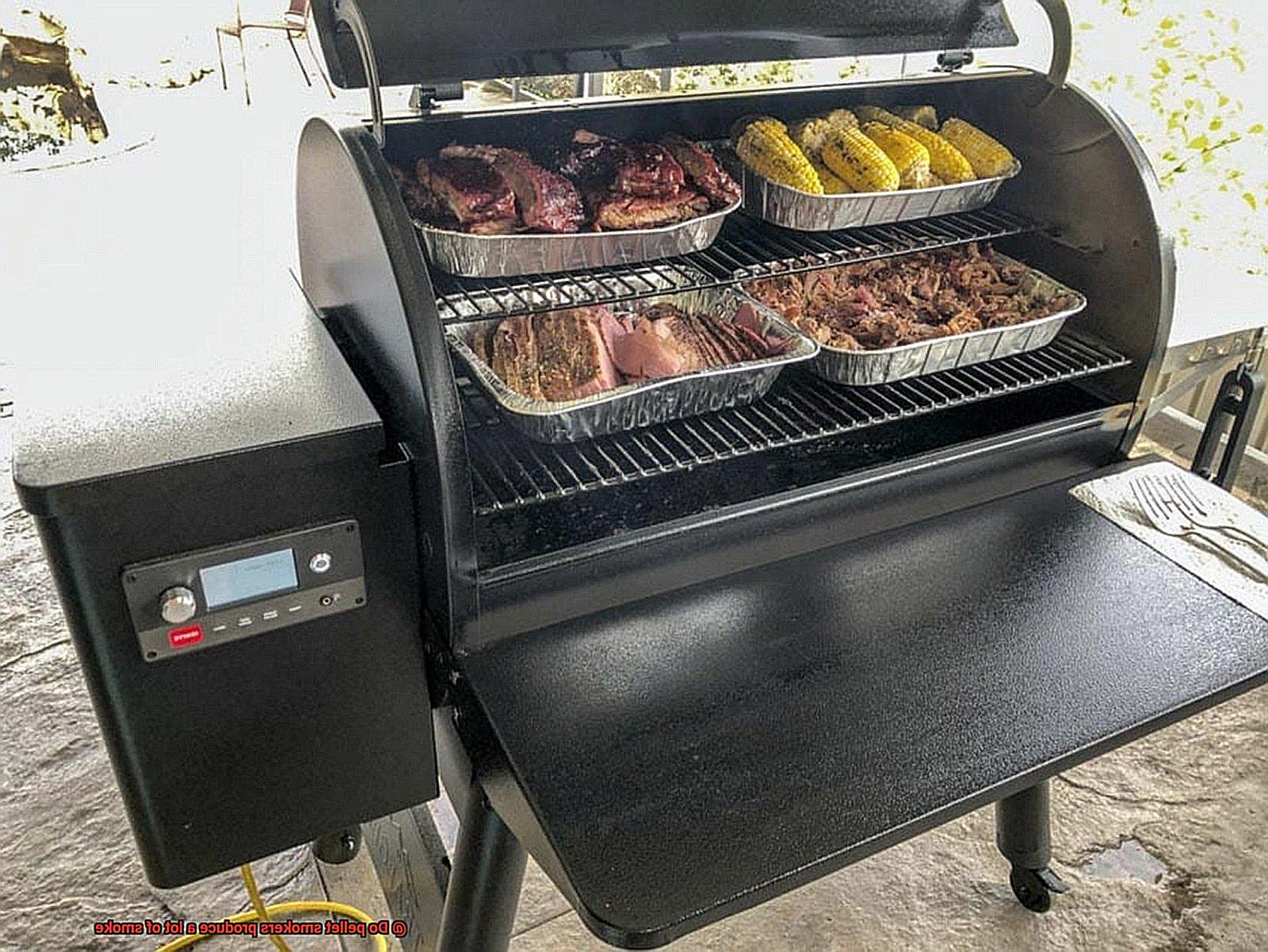
Control Airflow
Pellet smokers rely on airflow to maintain a consistent temperature and cook your food evenly. However, too much airflow can cause more smoke production. Adjust the vents and dampers so that there is just enough airflow to maintain the desired temperature. This will help you control the amount of smoke produced by your pellet smoker.
Preheat Your Smoker
Preheating your smoker before adding food can help reduce smoke production. This is because the pellets will have already burned off some of their initial smoke-producing elements. Preheating also ensures that your food cooks evenly and that the smoker is at the right temperature before cooking.
Use a Drip Pan
Placing a drip pan under the meat can catch any excess fat or juices that may cause more smoke production. This also helps keep the smoker clean and ensures that your food is cooked to perfection. Using a drip pan also reduces the risk of flare-ups, which can produce more smoke.
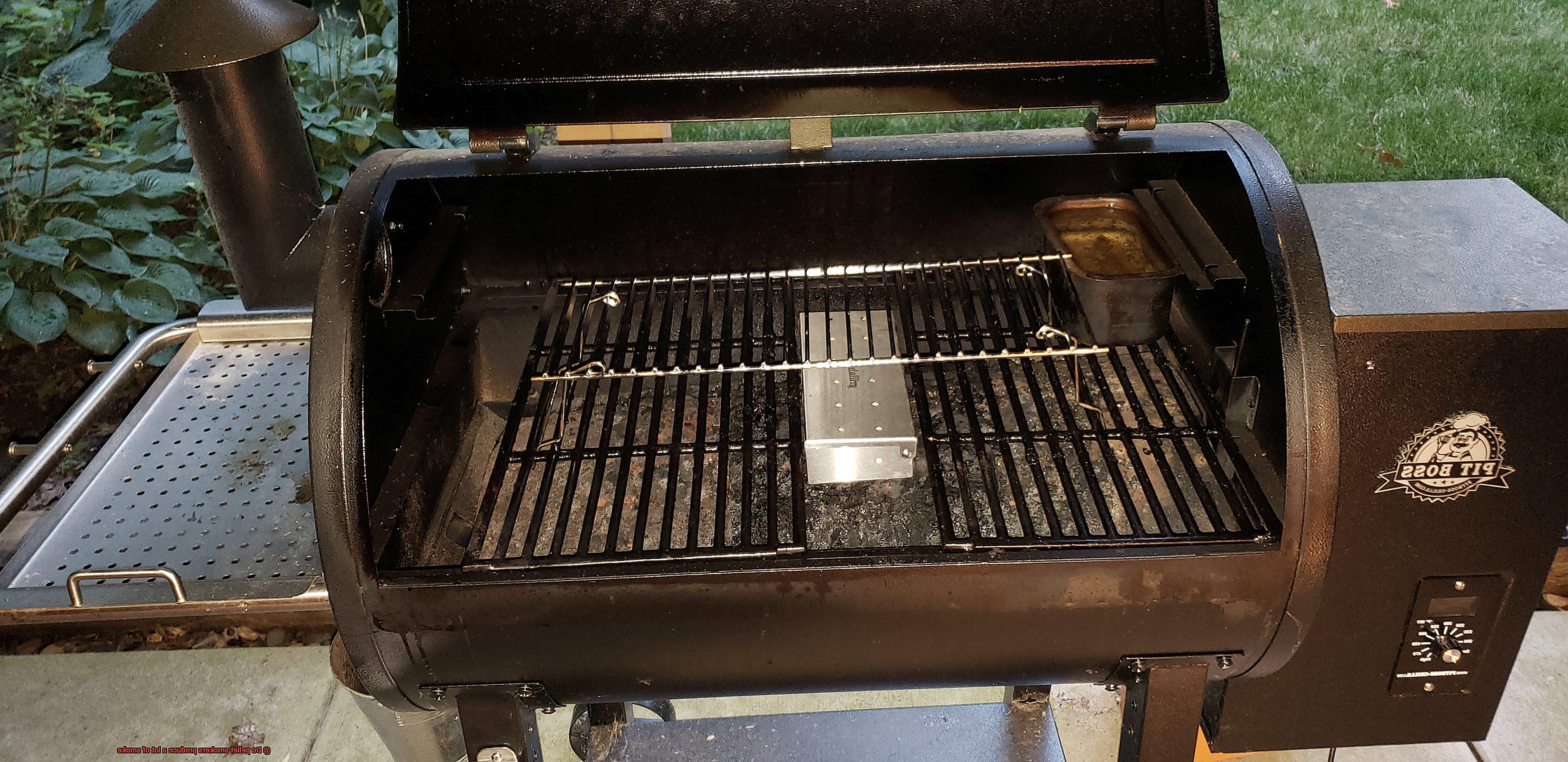
Consider Using a Smoke Tube or Box
Smoke tubes or boxes are a great option if you want to add extra smoke flavor without producing excess smoke from your pellet smoker. These devices allow you to fill them with wood chips or pellets and place them on the grill grates. They are an excellent way to control the amount of smoke produced and add flavor to your food.
Pros and Cons of Pellet Smokers
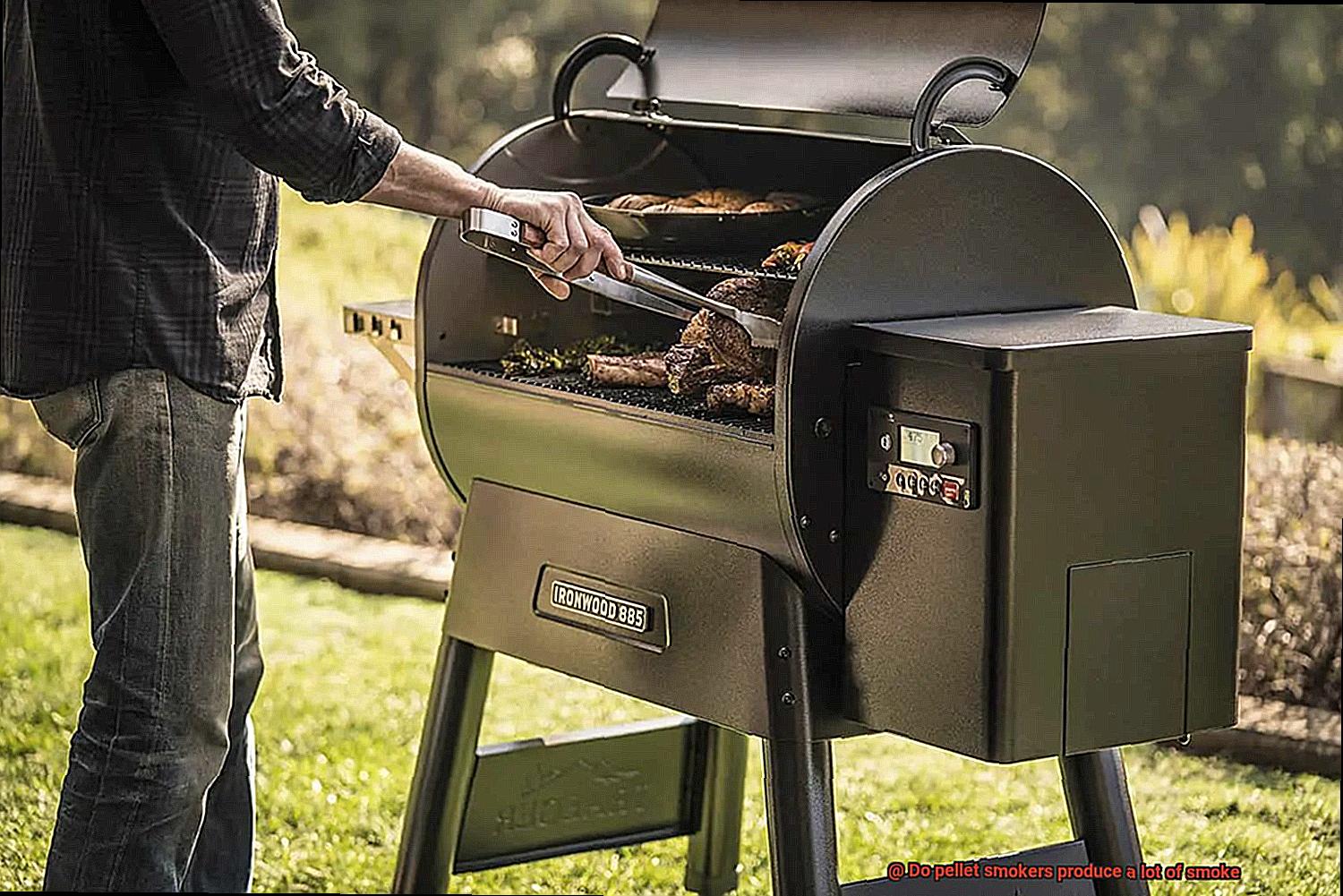
Pellet smokers have taken the grilling world by storm, and for good reason. These innovative grills offer a range of benefits that traditional charcoal and gas grills simply can’t match. But before you dive in and invest in a pellet smoker, it’s important to weigh the pros and cons carefully.
Let’s start with the pros. One of the biggest advantages of pellet smokers is their convenience. Unlike traditional grills that require constant monitoring and adjustments, pellet smokers can be set to a specific temperature and left to do their thing. This makes them perfect for busy cooks who want to enjoy delicious, smoked meats without spending hours tending to their grill.
In addition, pellet smokers offer precise temperature control. This is especially important when cooking delicate dishes like fish or poultry, where even slight temperature fluctuations can make or break your meal. And let’s not forget about the flavor – pellet smokers produce a consistent level of smoke that can infuse your food with delicious, smoky goodness without overpowering it.
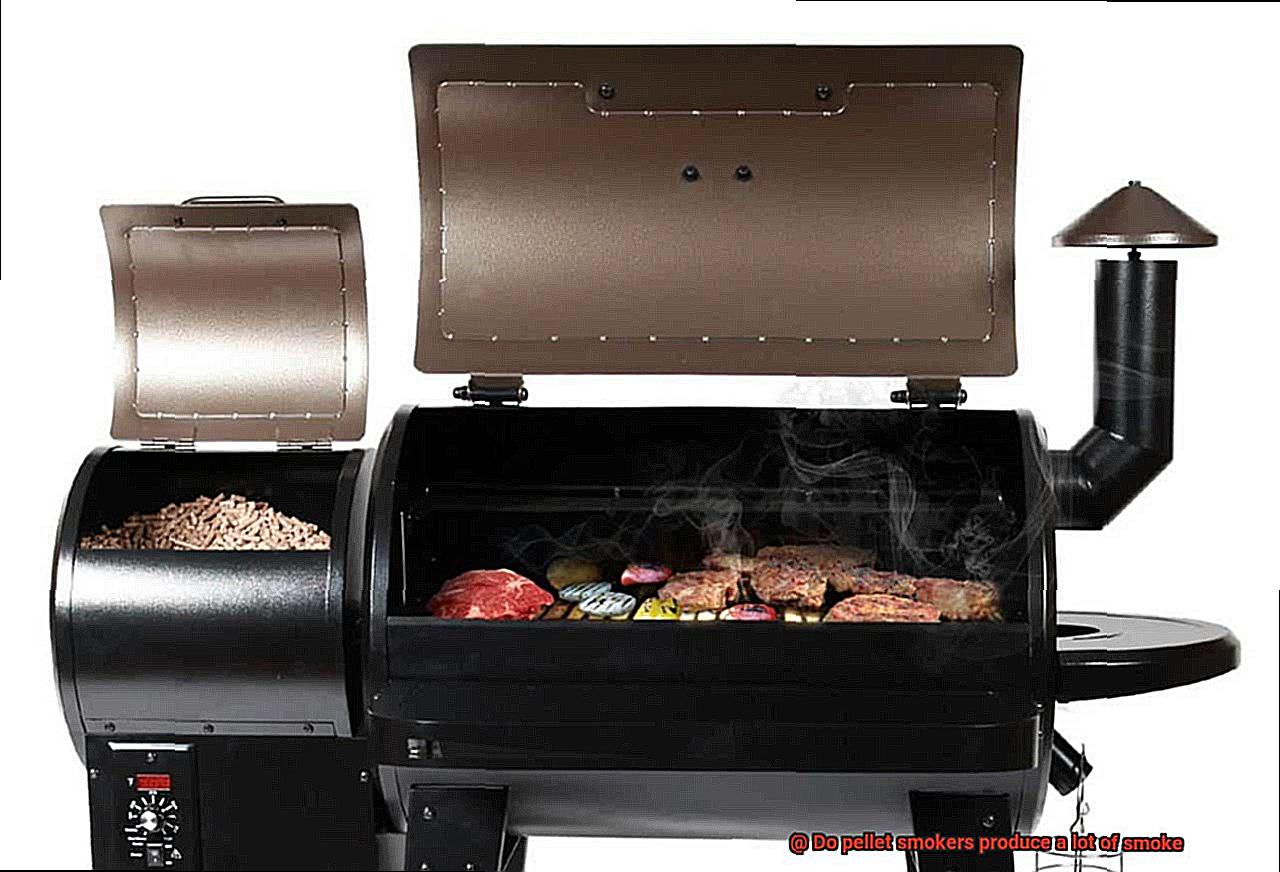
However, like any product, there are some potential downsides to consider. Pellet smokers can be more expensive than other types of grills, and they require a steady supply of wood pellets to operate. Additionally, they may not be as versatile as charcoal or gas grills since they may not reach high enough temperatures for certain types of cooking.
Another potential drawback is that some people may find that pellet smokers don’t produce as much smoke as traditional smokers. While this can be a good thing if you’re looking for a more subtle smoky flavor, it may be disappointing for those who prefer a stronger smoke profile.
To summarize, here are the pros and cons of pellet smokers:
Pros:
- Convenience
- Precise temperature control
- Consistent smoke production
Cons:
- Higher cost
- Need for wood pellets
- Less versatility
- Potential for less smoke production
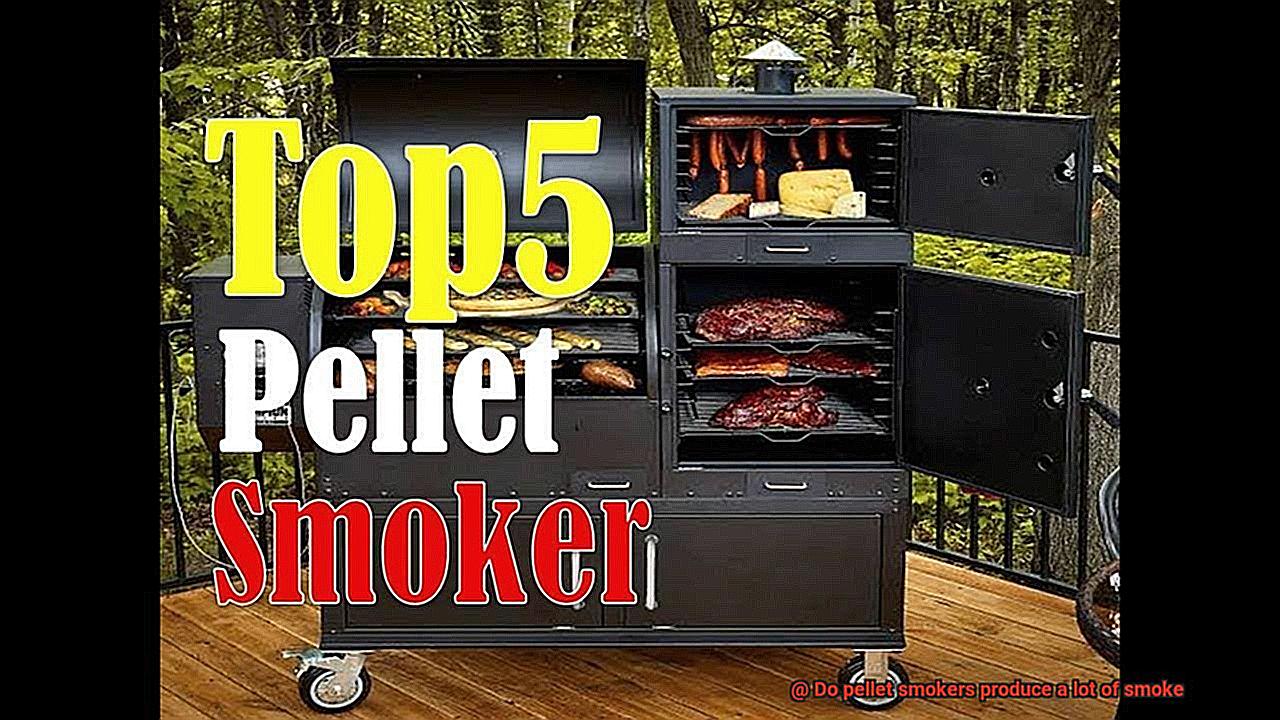
XoBT8C1UKtQ” >
Conclusion
In the world of BBQ, the debate about whether pellet smokers produce too much smoke or not enough has been ongoing. However, it’s clear that pellet smokers offer many advantages over traditional charcoal or wood smokers. They’re easy to use, offer consistent temperature control and smoke production, and are highly versatile.
The type of wood pellets used in a pellet smoker can make a significant difference in smoke production. Quality matters, since low-quality pellets may contain fillers or additives that impact burn rate and smoke production. Moisture content is another crucial factor to consider since wet or damp pellets will produce more steam than smoke.
When using a pellet smoker, temperature plays a vital role in smoke production. Lower temperatures typically result in more smoke production while higher temperatures may produce less smoke but a stronger flavor. Additionally, the design of the smoker can impact smoke production, with some models producing more smoke than others and adjustable vents allowing for more or less smoke output.
While there are potential downsides like higher cost and less versatility compared to other grills, pellet smokers remain an excellent option for those who want to enjoy delicious smoked meats without spending hours tending to their grill. By following some simple tips like choosing the right pellets, keeping your smoker clean, controlling airflow, preheating your smoker, using a drip pan and considering using a smoke tube or box you can reduce excess smoke production from your pellet smoker.
In short, while pellet smokers do produce smoke – as they should – it’s possible to control how much by taking into account factors like wood quality and moisture content as well as temperature and smoker design.

